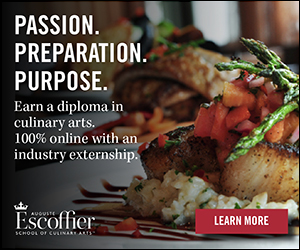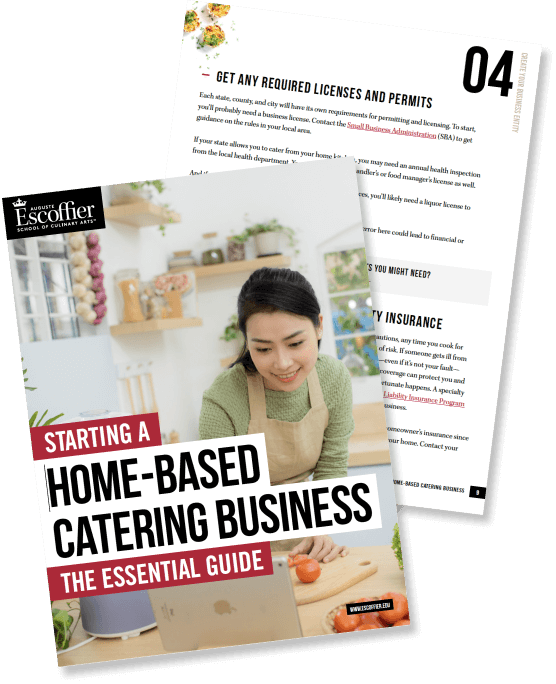The Best and Worst Materials for Cookware
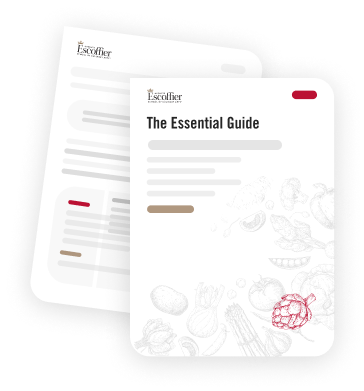
Ever wonder how professional chefs achieve perfectly seared steaks, cook the most delicate, flaky fish, or create mouthwatering candies? It’s not just about their skill or the quality of their ingredients—it’s also about selecting the right cookware for the job.
Choosing the right material can be tricky, though. With a wide range of prices and options, many of which are made from a blend of different materials, it’s easy to feel overwhelmed. Here, we’ll demystify the most common cookware materials and guide you in selecting the perfect options to suit your cooking style, whether you’re an occasional home cook or considering a culinary career.
Quick Guide: Best Cookware Materials by Type
Ask a professional chef what’s the best material for pots and pans, and chances are, their first questions will be, “What do you like to cook?” or “How often do you cook?” This is because there’s no one-size-fits-all answer. However, four materials consistently top the list as the best options, favored for various culinary needs.
Best Material for Pots and Pans: A Quick Comparison Guide
| Material | Heat Conductivity | Non-Reactive | Maintenance | Durability | Cost | Best For |
|---|---|---|---|---|---|---|
| Stainless Steel | Good (Excellent with aluminum or copper core) | Yes | Medium (requires some care to avoid sticking) | Very High | Medium to High | All-purpose cooking, searing, sautéing |
| Cast Iron | Excellent | No (unless well-seasoned or enameled) | High (requires seasoning and careful washing) | Very High | Low to Medium | Searing, frying, baking |
| Ceramic-Coated | Good | Yes | Low (easy to clean, but coating can chip) | Medium | Low to Medium | Low to medium heat cooking, delicate foods |
| Copper | Excellent | No (unless lined) | High (requires polishing and careful handling) | Very High (but can dent) | High | Precision cooking, delicate sauces and proteins |
1. Stainless Steel
Stainless steel stands out as a top-choice among home cooks and professional chefs alike. Known for its durability and non-reactive nature, it won’t erode or react with acidic foods and can withstand high temperatures and rough handling. Excelling in searing meats, sautéing, and versatile for all types of cooking, stainless steel has a reputation of being a true workhorse in the kitchen.
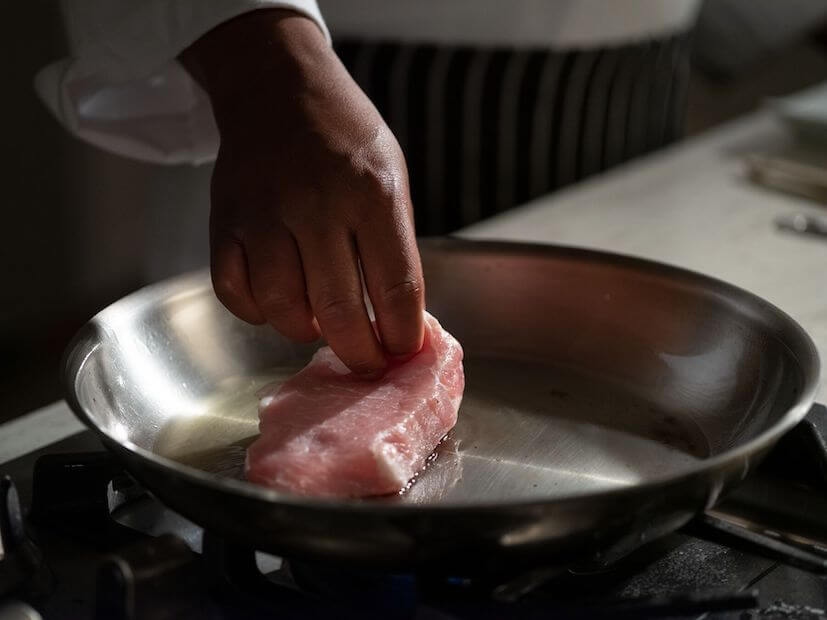
If you’re shopping for stainless steel pans, you may encounter terms like “tri-ply” or “five-ply,” which refers to the cookware’s construction. Tri-ply cookware consists of three layers: a core of aluminum or copper sandwiched between two layers of stainless steel, which enhances heat conductivity and retention. Five-ply cookware uses additional layers for even greater heat management.
These multilayers are designed to combine the best properties of different metals, but the catch? They come at a cost. High-quality stainless steel cookware is a significant investment, especially for five-ply varieties.
Another caveat with stainless steel is its tendency for food to stick without proper cooking techniques. Preheating the pan and using the right amount of fat can help prevent this, though there might be a learning curve for novice cooks.
Cookware Tip: Light vs. Dark Pans
Appearance matters too. When making a pan sauce, for instance, a light-colored pan like stainless steel allows you to clearly see the fond—the caramelized bits left after searing food—which is crucial for flavor. Too light, and the sauce will lack favor. Too dark, it will taste burnt. A difficult task to navigate if using a dark-colored pan! That said, cast iron can create incredibly flavorful fonds too—but when you’re just starting out and learning how to build a sauce, a lighter pan makes it much easier to see what’s happening.
2. Cast Iron
Another great workhorse in the kitchen is a traditional cast iron pan. It is made by pouring molten iron into molds, creating a heavy, sturdy cooking surface. It distributes and maintains heat well, and can handle very high heats.
Cast iron takes longer to heat so there is a little patience involved, but it’s excellent for searing steaks and pork. Its ability to maintain high temperatures ensures even cooking and beautifully browned surfaces. Its even heat retention also makes it good to use as bakeware for certain recipes, such as an apple crumble. In addition to stovetop and oven uses, cast iron can also be used over an open flame, making it extremely versatile. It’s excellent for one-pot meals that start on the stove and finish in the oven.
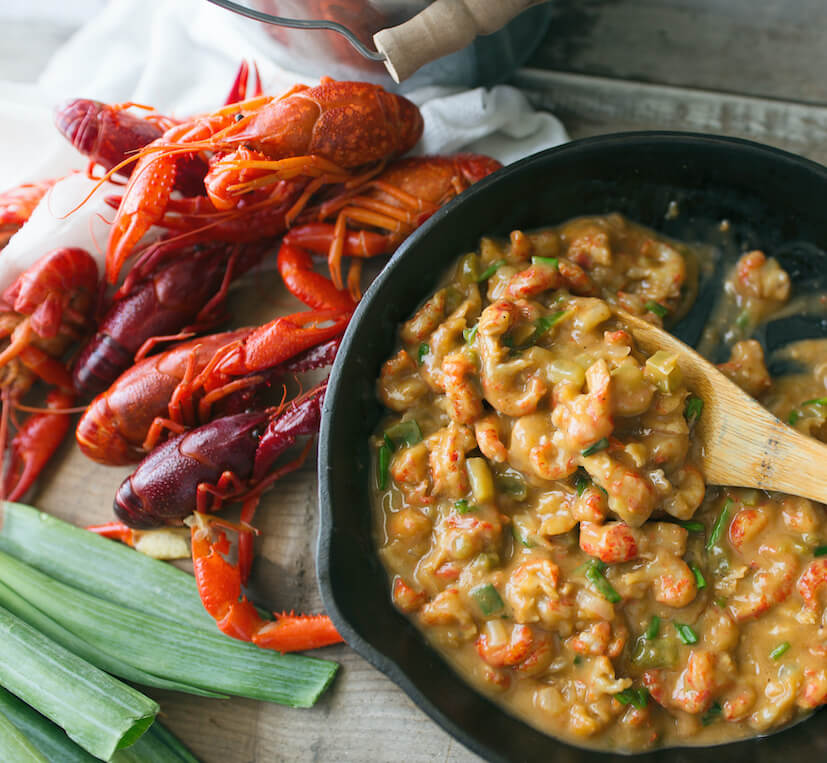
With its remarkable durability comes a drawback though, and that’s its weight. Cast iron is significantly heavier than other cookware materials, making it difficult to work with for individuals with limited hand strength.
Another slight drawback is its maintenance. If you’re someone who wants to toss your pots and pans into the dishwasher, a cast iron skillet might not be your best bet. This material should be hand washed, then seasoned, which involves rubbing a thin layer of oil and baking it in the oven. (This helps create a natural non-stick barrier). When taken care of properly though, it can become an heirloom piece that lasts for decades.
One last thing to consider is the acidity of the foods you like to cook. If your pan is brand new or the seasoning is in poor shape, you should avoid cooking highly acidic foods which can strip away the seasoning and lead to food picking up a metallic taste. If your pan is well-seasoned, however, this issue is minimized.
Cookware Tip: Handle Material
If transitioning cookware from stovetop to oven, ensure handles are ovenproof. Cast iron and some high-end stainless steel pans often feature oven-safe handles.
Enameled Cast Iron
For those new to cooking or seeking convenience, enameled cast iron is an excellent alternative to traditional cast iron. It’s made by fusing a layer of powdered glass to a cast iron pan, which provides the same excellent heat retention and even cooking benefits as traditional cast iron but without the need for seasoning. The enameling provides a protective coating, so you can also cook acidic foods like tomato sauce without worrying about the metallic taste or damaging the pan’s surface.
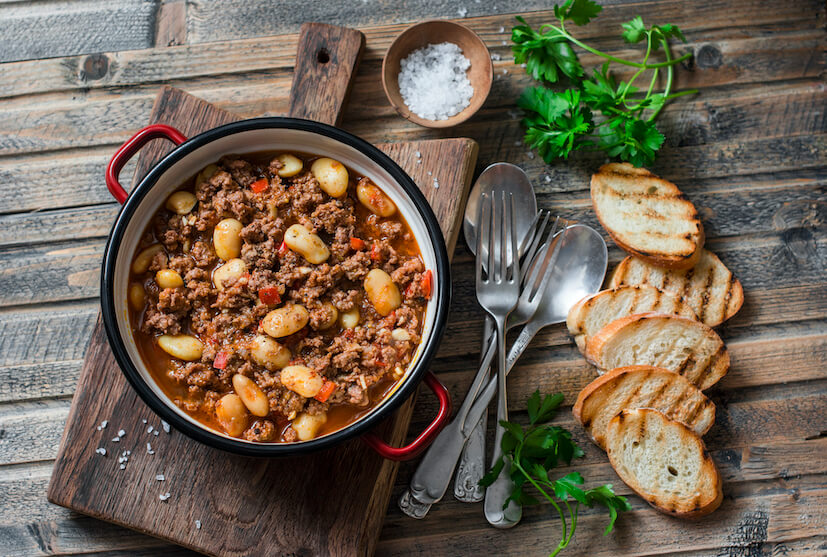
If you’ve ever wondered why we haven’t all ditched traditional cast iron for enameled versions, it’s a good question. No seasoning to maintain, no risk of rust, and easier to clean—on paper, it seems like an obvious swap.
But there’s a few reasons bare cast iron will have tried-and-true fans forever. For starters, it’s much more affordable—you can grab a solid skillet for $20–50, while enameled cast iron can easily set you back $100+. Traditional cast iron is more durable and also handles higher heat, and many cooks prefer the direct metal contact for serious searing, crisping, and building that flavorful fond.
Torn between the two? A lot of serious home cooks end up owning both: cast iron for high-heat cooking, like searing meats, and enameled cast iron for soups, braises, and everyday meals.
3. Ceramic-Coated
For those wanting a non-toxic, non-stick surface, ceramic-coated cookware is ideal. These types of pans are celebrated for their natural non-stick properties, which are achieved without the use of potentially harmful chemicals like PFOA and PTFE, found in some traditional non-stick coatings. Ceramic-coated cookware is also easy to clean thanks to its smooth surface, and offers good heat distribution.
On the downside, ceramic-coated cookware is not a match for the durability of materials like cast iron or high-quality stainless steel. The ceramic coating can chip or flake off if the cookware is mishandled or used at high temperatures. Excessive heat can cause the coating to degrade faster along with its non-stick properties. These are important things to consider if you’re investing in longevity or want to cook at high temperatures.
4. Copper
With the mention of copper cookware, you might envision a traditional French kitchen, bathed in the warm glow of polished copper pots and pans hanging above the stove. With centuries of tradition behind it, copper is a high-end cookware choice celebrated for its unmatched temperature control and aesthetic beauty.
Copper’s exceptional heat conductivity ensures even heating across the pan, eliminating hot spots that can cause uneven cooking. It responds rapidly to temperature adjustments, heating up and cooling down quickly, which is ideal for tasks that require precise temperature control—like melting sugar for confections, simmering sauces, or cooking delicate fish and proteins.

However, there are a few downsides to consider. Copper is among the more expensive cookware materials and demands considerable maintenance. The metal tarnishes over time and requires regular polishing to preserve its lustrous appearance, a task that can be labor-intensive and off-putting for some home cooks. Additionally, copper’s reactivity with acidic ingredients means it has to generally be lined with tin or stainless steel to prevent food contact with the bare copper. This material is also incompatible with induction stovetops.
Given its cost and maintenance requirements, copper may not be the best choice for novice cooks. But those who are more experienced will likely appreciate its nuances and can take full advantage of its superior cooking properties.
Cookware Tip: Stovetop Matters
- Gas Stovetops: Best for copper, stainless steel, and traditional cast iron, which adapt quickly to temperature changes.
- Induction Stovetops: Require magnetic materials like stainless steel or enameled cast iron.
Materials to Avoid in Your Cookware
Now that we’ve covered the best options, let’s talk about the other end of the spectrum. Some materials, while popular, come with significant drawbacks that might make them less desirable or even hazardous over time. Here, we explore the materials that are best avoided or used with caution.
1. Untreated Aluminum
As mentioned above, aluminum is an excellent conductor of heat which is why it’s utilized when constructing stainless steel cookware. It’s also lightweight. Untreated though, aluminum is not a great choice in the kitchen.
That’s because aluminum is highly reactive with acidic and alkaline foods. This can cause the metal to leach into the food, potentially affecting flavor and appearance. Unlike durable stainless steel, aluminum can warp under high temperatures and with regular use. This decreases its longevity and can cause uneven cooking.
If you want the benefits of aluminum’s lightweight nature and heat conductivity, consider anodized aluminum, which is cookware that has undergone a process to harden the surface. This greatly reduces its reactivity and makes it a safer choice for a broader range of cooking tasks.
2. Non-Stick Teflon (PTFE)
Teflon, the brand name for polytetrafluoroethylene (PTFE), was initially popular for its exceptional non-stick properties, especially for trickier foods like eggs or pancakes.
But when Teflon-coated pans are overheated (typically above 500°F or 260°C), they can release toxic fumes. The coating is also susceptible to scratching, especially when metal utensils are used. Over time, the surface can degrade, leading to flaking and chipping, which can mix tiny particles of Teflon into your food.
Given the potential health risks associated with this cookware, many cooks are moving towards alternative non-stick options such as the ceramic-coated, hard-anodized aluminum, or seasoned cast iron.
3. Cheap Ceramic
When budget constraints are a primary concern, opting for more affordable ceramic cookware might seem appealing. While this choice allows for immediate cost savings, it’s important to consider some potential long-term trade-offs.
For starters, cheaper ceramic cookware tends to be less durable than its higher-quality counterparts, leading to issues like chipping, cracking, or flaking of the ceramic coating over time. Additionally, cheaper versions might not distribute heat as evenly, which can result in uneven cooking. These products often have limited heat tolerance too, which can degrade the cookware more quickly. In this case, methods using high-heat, like searing or sauteing, will be off the table.
Choosing budget-friendly cookware doesn’t always mean compromising on quality, but it’s crucial to be aware of these factors to ensure that your cookware can meet your culinary needs within the limits of its capabilities.
Perfect Pairings: Choose the Right Utensils for Your Cookware
After you’ve chosen your ideal cookware, it’s important to use the right utensils to keep it in top condition and avoid any damage during cooking.
For copper and ceramic-coated cookware, it’s best to stick with wooden or silicone utensils as metals can cause chipping or scratch the surface. Although cast iron is tougher, metal utensils should be used with care and only for specific tasks, like scraping up fond after searing meat. Stainless steel offers the most flexibility—you can use wood, silicone, and metals thanks to its durable nature.
Just remember, after all the effort you put into choosing your perfect cookware, pairing it with the right utensils is the secret to keeping it pristine and your cooking impeccable!
From Pan to Perfection
Choosing the right cookware goes beyond price and looks—it’s about understanding their materials and how each piece handles in the kitchen. With the right tools, each dish you prepare becomes a chance to learn and perfect your skills.
To discover more ways to sharpen your culinary skills, check out our online cooking classes. Or if you’re considering a formal culinary education, Escoffier offers both degree and diploma programs in culinary arts, available on-campus and online to fit into your lifestyle.
Enjoyed this article? Try these next:


